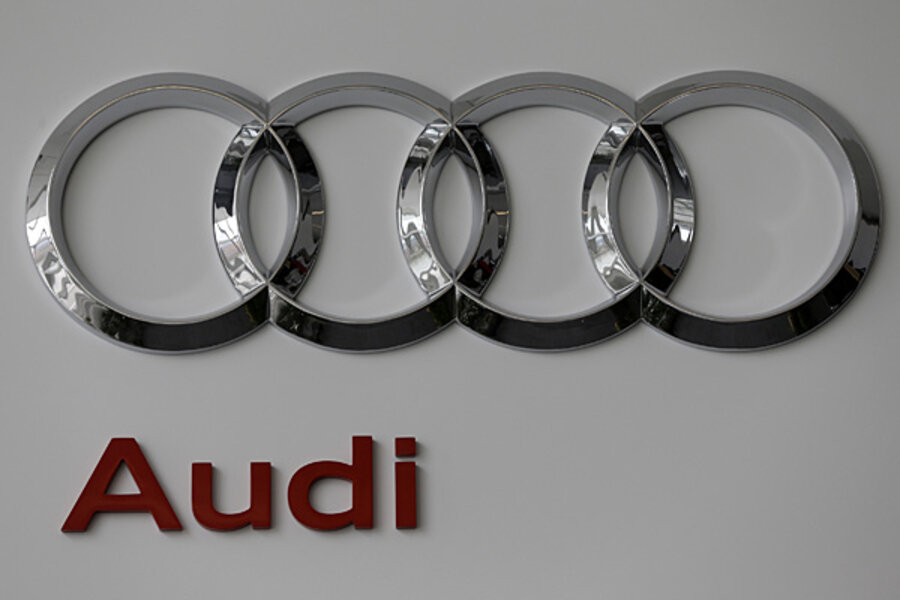Super Bowl ads and Snapchat? Audi tries something new
Loading...
Yesterday afternoon and evening, millions of sports fans geared up for a Super Bowl that would ultimately prove to be stupendously underwhelming (or overwhelming, for Peyton Manning).
But despite the huge number of TV sets tuned to the big game, many viewers were glued to other, smaller screens. That's because the way we watch TV is changing. Audi understands that, so the automaker tried its hand at a newfangled marketing campaign, conducted via Snapchat.
Was Audi successful? You be the judge.
NOT YOUR GRANDMA'S SUPER BOWL
Once upon a time, when something important was on television, interested viewers had to shush everyone around, crank up the volume, and pay close attention. Then came VCRs, DVRs, Roku, YouTube, and variations on those themes, and suddenly, we didn't have to worry. If we missed something, we could always catch it later.
That gave us room to multitask, and today, everyone's favorite multitasking tool is the smartphone. When news is happening, we put our heads down and we Facebook it, we Instagram it, we tweet it, we turn it into GIFs and post it to Tumblr, where it gets reblogged and reblogged ad infinitum. Today, TV isn't so much a spectator sport as a conversation-starter on social media.
One of today's trendiest social media channels is the smartphone app called Snapchat. Like a bajillion other apps, Snapchat allows users to send private messages, pics, and videos to individuals or groups of friends, including followers. (It's a little like Twitter in that respect.) Unlike other apps, though, Snapchat erases those messages, pics, and videos in a matter of seconds. Snapchat is most popular with users in their teens and early 20s.
Advertisers know all-too-well about Snapchat and are eager to gain access to its young user base. So, during last night's Super Bowl broadcast, Audi's social media team sent out a boatload of snaps to its followers, hoping to get their attention. Speaking to AdWeek several days before the broadcast, Audi's Loren Angelo said that the snaps would focus on "anything and everything happening outside the football bubble on Sunday".
You can see a few examples of the snaps they sent above, courtesy of Twitter's @ccpoirier. Basically, they constitute a series of non sequiturs -- not unlike the endless stream of unconnected images we see as we scroll through our Facebook news feeds and Tumblr dashboards.
OUR TAKE
Are Audi's snaps funny? Occasionally. They're not as good as the "Doberhuahua" ad, but in keeping with the Snapchat aesthetic, they're perfect (and perfectly forgettable) ten-second distractions.
Do they sell Audi products? No, but social media isn't really about selling, it's about engaging. On that front, they succeed, marginally.
Do they reinforce the Audi brand? Not even close. These snaps could be from anyone. There's no Audi logo, nothing to identify their point of origin.
From where we sit, the campaign was an interesting exercise. Due to the ten-second expiration stamp that's slapped on every snap, marketers have been unsure how to use Snapchat for advertising. Audi's attempt was close, but it feels like a near miss. It also feels a little cringe-worthy, like grandpa rapping to seem cool, but maybe we just have a low tolerance for embarrassment.







